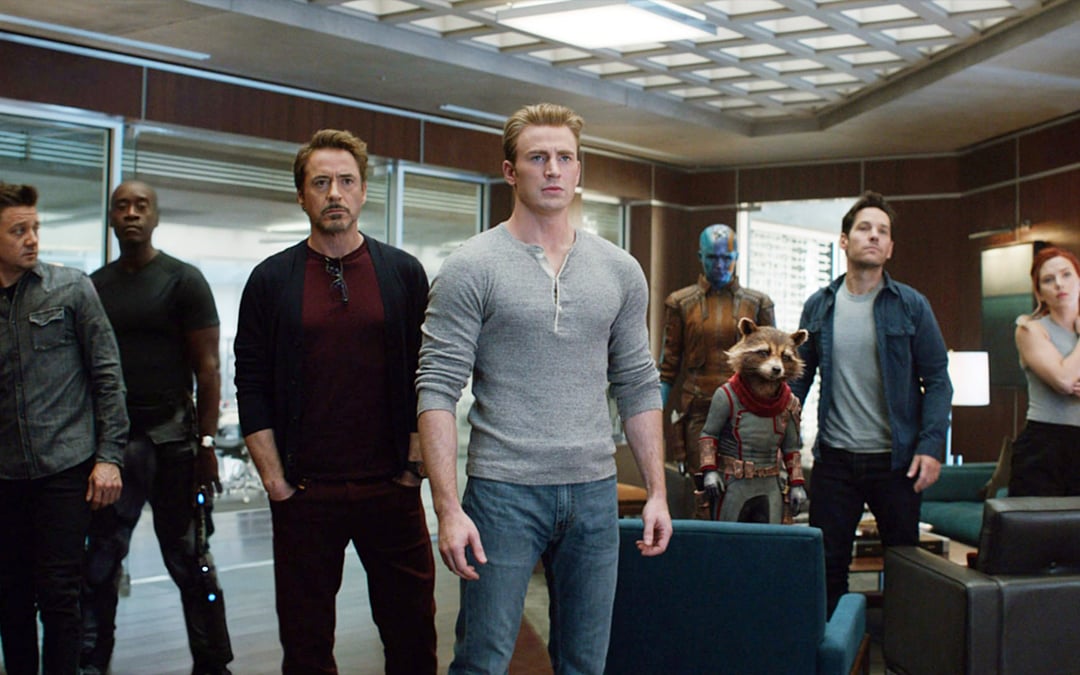All The Write Moves: Spider-Man: 'Far from Home'
July 8, 2019
In addition to being the latest blockbuster from Marvel Studios, Spider-Man: Far from Home is the eighth (!) feature film starring Spider-Man, the beloved superhero created by Stan Lee and Steve Ditko way back in 1962. This naturally raises the questions of why audiences aren’t sick of the character, and of how filmmakers continue finding new ways to explore the problems of a young guy given strange abilities after receiving a bite from a radioactive insect. Lest we forget, it was just months ago that Marvel (and Sony, which owns the rights to Spider-Man) released the imaginative Spider-Man: Into the Spider-Verse. By comparison, Far from Home is utterly conventional.
Still, Far from Home has done record-breaking business and, as of this writing, the picture holds an impressive 91% positive rating at Rotten Tomatoes. Clearly, writers Chris McKenna and Erik Sommers—both veterans of Spider-Man: Homecoming (2017)—did something right, as did director Jon Watts, helmer of both this picture and Homecoming. To nearly the utmost degree possible (given the constraints of an FX-driven superhero saga), they told a story about a person who happens to be a hero, rather than one about a hero who happens to be a person.
Building a Web
Like most contemporary blockbusters, Far from Home has at least a dozen significant plotlines, from the main story about Peter Parker/Spider-Man (Tom Holland) teaming up with enigmatic superhero Quentin Beck/Mysterio (Jake Gyllenhaal) to a comedic subplot about Peter’s best friend dating a classmate. Viewed from a skeptical perspective, the overabundance of plot might seem like a crass means of keeping viewers with short attention spans interested. Viewed from a favorable perspective, dense plotting is a tool for creating scope. By the end of Far from Home, viewers have been taken, literally, to lots of different places.
The trick is prioritization. Far from Home serves one purpose above all others, which is deepening the audience’s relationship with Peter. Accordingly, the movie’s real main plot isn’t the business of Spider-Man and Mysterio fighting destructive creatures called the Elementals. Instead, the real main plot involves Peter and his high-school classmates taking a science trip to Europe. The trip is what triggers most of the movie’s big emotional moments.
Structurally, everything in Far from Home is subordinate to (or at least dependent upon) the science trip. Excepting the quick prologue scene that establishes Mysterio and the Elementals, the movie proper begins when the science trip begins, and the movie proper ends when the science trip ends. This demonstrates how storytelling prioritization works. Generally speaking, the most important storyline in a narrative featuring myriad plot elements is the one that gives the piece its overall shape. The next most important storyline provides emotional structure. In this case, Peter’s attempts to express his romantic feelings for classmate MJ (Zendaya) serve this purpose. And so on. Each level down from the main storyline represents something that serves a lesser purpose and therefore requires less screen time.
Takeaway: Not every element of a complex plot requires equal screen time.
A Hero’s Burden
The thematic core of Far from Home lies even deeper than Peter’s awkward but touching courtship of MJ. Since Far from Home takes place after the tragic climax of Avengers: Endgame, Peter no longer has the support of his superhero mentor, Tony Stark/Iron Man (played by Robert Downey Jr. in many films). Throughout Far from Home, much is made about the question of whether Peter can assume Iron Man’s mantle as Earth’s preeminent guardian. That’s a lot of pressure to put on a 16-year-old’s shoulders. Putting this thematic material across is easier said than done.
Firstly, superhero stories are fantasies, so developing any sort of emotional engagement with characters who can do things normal humans cannot do requires a meticulous approach to characterization. Secondly, it’s hard to add thematic weight to a genre that’s inherently escapist. Adding too much weight tips the scales in the wrong direction and results in oppressive darkness, which can be a turnoff in a summer blockbuster.
The filmmakers carefully layer Peter’s existential quandary into discussions that Peter has with three characters, each of whom has relevant insight. Peter discusses the cost of being a champion with Mysterio, a fellow superhero; Happy Hogan (Jon Favreau), Tony Stark’s best friend; and Nick Fury (Samuel L. Jackson), the guy who assembled the Avengers. All three men leave the decision of how to go forward up to Peter, even though plot twists seriously complicate Peter’s relationships with two of these characters.
Providing multiple surrogates for Peter’s missing mentor feels totally appropriate for the protagonist’s stage in life, because high-school kids get advice from nearly all the adults they encounter. Moreover, by spreading the work of challenging Peter across multiple characters, the film puts across a subtle but resonant idea that it is not just one person asking Peter to make choices about his future, but rather that it is life itself forcing a choice. As we’ve learned from many previous Spider-movies, “With great power . . .”
Takeaway: Situations that force protagonists to make important life choices are rich with dramatic possibilities.
On-the-Job Training
While it can be thrilling to watch fantasy characters who always make the right badass moves—think James Bond—the archetype of the infallible hero can also lead to dull storytelling. So far, Tom Holland’s appearances as Spider-Man have steered clear of this problem in a credible way, because unlike his full-grown peers (e.g., Black Widow, Captain America, etc.), this current big-screen version of Peter hasn’t yet figured how to be a superhero. In point of fact, he’s barely even figured out how to be a person.
The gigantic error of judgement that Peter makes in the middle of the film won’t be spoiled here. Suffice to say that he makes plenty of smaller mistakes before and after his big blunder. In one particularly amusing scene, Peter inadvertently takes extreme measures to checkmate a romantic rival, which in turn causes Peter to risk blowing his secret identity while cleaning up his own mess. Yet the filmmakers ensure that we never doubt Peter’s abilities or his heart. From a narrative perspective, that’s key. If Peter botched too many things, then we wouldn’t believe it when he accomplished something impressive. Flip side, knowing that Peter is always one bad impulse away from causing mayhem adds enjoyable tension to action sequences.
The lesson here is helpful for screenwriters trying to craft stories about characters gaining and/or discovering amazing abilities. If the fictional people in your scripts master their powers instantly, then the characters won’t seem relatable to audiences. Conversely, if they can’t handle their powers at all, they might come across like idiots. The happy medium is the mode employed throughout Far from Home—showing a good person always striving to get better, even when faced with a steep learning curve, allows us to ease our way into believing that the character can do remarkable things.
Takeaway: Perfect heroes are boring.
Written by: Peter Hanson
Peter Hanson is a Los Angeles-based writer, filmmaker and teacher. He directed the screenwriting documentary Tales from the Script, and he teaches at Pepperdine University and UCLA Extension. He provides script consulting at www.GrandRiverFilms.com.- Topics:
- Discussing TV & Film




